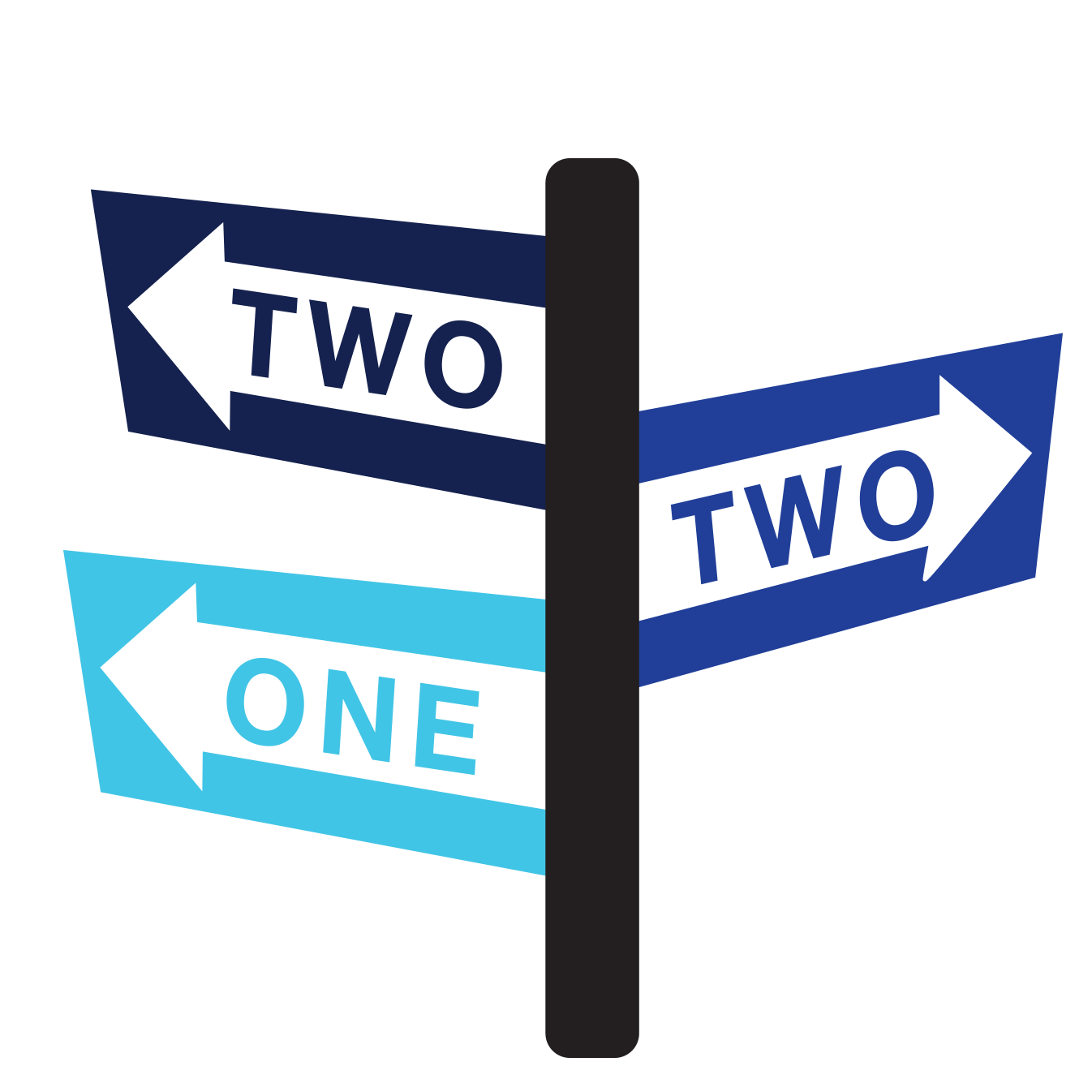Killing Our Parents and the Greeks: Analyzing the Literary Transition from Greek Epics to Camus’ Absurd Man
Abbie Steuhm asks how we will be able to re-orient ourselves post-pandemic and discusses how Albert Camus' Absurd Man can give us ideas on how to deal with - and write about - tragedy.

In the early twentieth-century, modernism tore through traditional literature and cemented new literary practices with a focus on realism. This drastic change from the mythological and romantic came about as “an epoch that witnessed not only unprecedented upheavals in its systems of beliefs and values but also experienced undreamt-of political bestiality in the shape of two World Wars found itself bereft of the fundament that had traditionally made artwork the work of celebration” (Dowden 1). During the time of these large-scale tragedies, people became disillusioned with the traditions and beliefs of their parents and ancestors. So, in literature, the new wave of modernist writers concluded that “lamentation is not only possible, it is necessary” (Dowden 1). This lamentation begins with Thomas Mann’s Death in Venice (1912), as the tale of Aschenbach parodies the art form of ancient Greek tragedies through the form of the novel, leading to the death of tragedy. Following the death of tragedy is the death of the innocence, with Franz Kafka’s The Trial (1925), in which the protagonist K. learns a needless guilt that kills him in the end. While the two novels may destroy previous literary notions and traditions, they also develop the foundation for Albert Camus to create his idea of the Absurd Man, a figure that soon becomes the hero of modern literature.
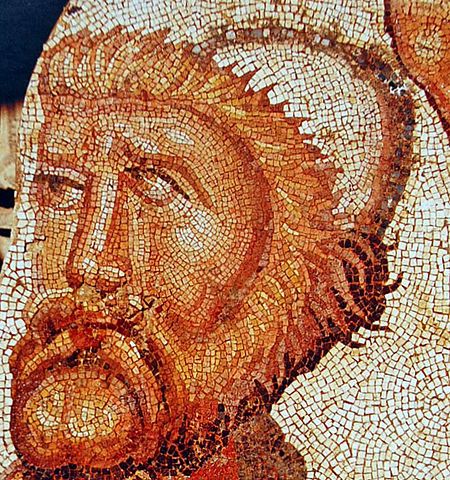
Before the existentialist novel of the modern age, there were the great epics of Ancient Greece. Literary critic Georg Lukacs explains the ancient epics such as The Odyssey as being the products of the Ancient Greek society in which people “knew only answers but no questions, only solutions... but no riddles, only forms but no chaos” (30). In other words, epics like The Odyssey are about fate and order. The hero Odysseus is one that is never questioned despite letting his men be killed over petty issues (e.g., the episode with Polyphemus), and there was never any doubt that Odysseus would return home. The conflicts of The Odyssey were only external; not once did the audience see Odysseus battle in an internal monologue as he was always resolute in his goals, ideals, and beliefs. For the Greeks, everything in life had meaning, even the afterlife, as seen through the Greek god Hades. The modern age novel on the other hand, is the complete opposite of Ancient Greek epics in that its conflict is all about the internal struggle to find meaning in life. The novel’s heroes “are seekers” and “the simple fact of seeking implies that neither the goals nor the way leading to them can be directly given” (Lukacs 59). To those characters, there is no inherent meaning in life, so the novel consists of the search for said meaning.
It is here that Thomas Mann’s novella Death in Venice utilizes the form of the novel to kill off Greek tragedy. Death in Venice tells the story of Aschenbach, a middle-aged writer who takes a vacation to Venice where he becomes infatuated with fellow vacationer and young child Tadzio. The title itself, Death in Venice, implies the story to be a tragedy where a character ultimately dies in the end. The novella also utilizes many images of Greek mythology, particularly with the character Tadzio. Tadzio’s appearance also calls forth the Greek gods/figures Eros, Narcissus, and Hyacinth, all of whom represent godlike beauty. Hyacinth in particular was the lover to Apollo, an image that reveals Aschenbach’s romantic feelings for Tadzio; however, Aschenbach repressed those pedophilic feelings, as the text never explicitly mentioned them. With the imagery of Greek mythology, the novel was set to carry out a story modeled after Greek tragedy with Aschenbach’s repression leading to his downfall to teach the audience a moral lesson. However, as in Lukacs’ Theory of the Novel, the novella’s ultimate form is that of the novel, one born of its godless age no matter how hard it may try to regain those gods. Death in Venice is one such novel where Aschenbach reclaims the idealized aesthetics of Ancient Greece through his encounter with Tadzio instead of submitting to tragedy.
The novella’s façade of Greek tragedy is comparable to the tragic play The Bacchae, where King Pentheus of Thebes is seduced by the god Dionysus to join the Bacchae only to be beheaded by his own mother. Pentheus had repressed what philosopher Friedrich Nietzsche referred to as his “Dionysian” self, a psychological drive that generates “intoxicated reality” (Burnham and Jesinghausen 49); the chaotic part of one’s mind where passions lie. Aschenbach is a version of Pentheus and writes about his ideal hero, describing it as “the conception of an intellectual and virginal manliness, which clenches its teeth and stands in modest defiance of the swords and spears that pierce its side” (Mann 11). That hero also describes Nietzsche’s “Apollonian” self, the psychological drive that favors order and logic over the Dionysian chaos and emotions (Burnham and Jesinghausen 50-58). Both Pentheus and Aschenbach had repressed their Dionysian sides for the Apollonian ideal. However, Aschenbach quickly departs from the image of Pentheus as he himself decided to take the impromptu trip to Venice, letting his Apollonian self slowly fall apart.
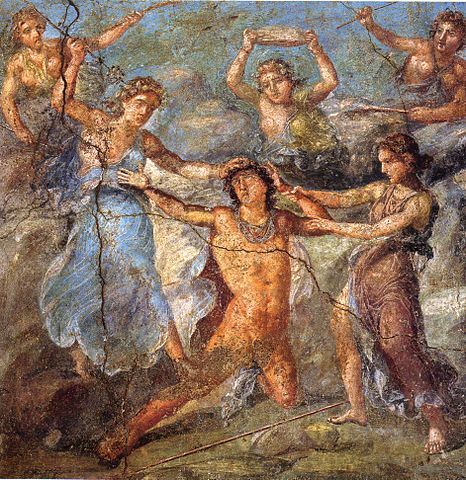
The Dionysian drive in Death in Venice presents itself as the young boy Tadzio. Much like the beautiful Dionysus, Tadzio has the beauty of Greek male heroes and gods; however, he is not an active character like Dionysus. Rather, Tadzio remains passive throughout the entire novella having only made eye contact twice with Aschenbach. As Aschenbach falls into the Dionysian way of life like Pentheus, the figure that supposedly seduced him into it remains as a figure to be projected onto and not a legitimate character. Any and all facts about Tadzio are what Aschenbach projects onto him. Even Tadzio’s own name may not be his actual one, as it is what Aschenbach determines it to be after making out “nothing more exact than two syllables, something like Adgio” (Mann 32). This goes directly against the Greek epics and tragedies, as each and every character introduced had a clear and active purpose. Tadzio’s character is supposed to play the part of Dionysus who seduced Pentheus to his death, but that purpose is only a projection from Aschenbach. Unlike the Greek tragedy, Aschenbach is the source of both his Apollonian and Dionysian drives, implying a sense of control over his fate.
Aschenbach is able to control his fate by deciding whether he wants to leave Venice, and his decision to stay leads to the death of tragedy. Death in Venice at first displays the façade of being a modern Greek tragedy, but as Lukacs had stated, novels are born of the godless modern era and are subsequently about finding meaning in life. The novel’s goal of finding meaning actually results in what Nietzsche believed to be the “death of tragedy.” According to Nietzsche, tragedy “is not the imitation of the empirical, but the projection of Dionysiac truths,” and that the modern novel itself is Platonic dialogue where there is nothing but empirical reasoning (Burnham and Jesinghausen 98-99). The search for meaning lacks the Dionysiac preordained fate that creates tragedy, leaving behind only the Apollonian drive of the characters. The search for meaning then allows characters to change their future, giving them a sense of optimism, and “because of this optimism, tragedy dies” (Burnham and Jesinghausen 100). While Aschenbach’s end is meant to be tragic, as he dies “the pale and lovely Summoner out there smiled at him and beckoned” (Mann 75), making Aschenbach’s death a romantic one, not a tragic one, because he is united with Tadzio. Aschenbach dies being in control of his fate and with the optimistic image of Tadzio acknowledging him, which in turn causes the death of tragedy.
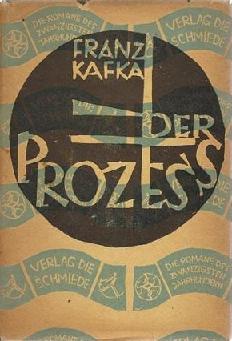
Despite this declaration of the death of tragedy, Franz Kafka began writing his own tragic novel in 1914 (two years after Death in Venice). The Trial follows thirty-year-old banker Josef K. who finds himself lost as he tries fruitlessly to navigate a mysterious court system that had arrested and placed him on trial without ever revealing the accusation made against him. While Mann focused on Nietzsche’s Apollonian and Dionysian psychological divide, Kafka’s novel focuses on a Freudian fate executed by the parents. Kafka once explained his relationship to his parents in “Letter to his Father,” describing his father as a man who “seemed to exercise an absolute authority” and “could denounce everyone, regardless of consistency or logic, and remain unchallengeable.” Due to his father’s overbearing nature, Kafka states that he “acquired a boundless feeling of guilt” (Robertson 17). Kafka’s mother, however, plays only a small role in his life as “she appears only as an assistant to the father, too close to him ever to afford the children any protection from his authority, but nevertheless as an unhappy mediator, oppressed by her husband” (Robertson 20). While there cannot be any concrete conclusion to the psychoanalysis of Kafka or the validity of his childhood and parental portraits, his letter introduces the themes of authority, passivity, and guilt, which can then be reapplied to the reading of The Trial.
Throughout the novel, K. represses the slightest notion of being guilty, claiming a childish innocence in all matters. However, as K. attempts to learn more about his trial, he is soon swept up in battling court officials for advantage and going to women for comfort and aid. The court and the women belonging to it resemble the strong characteristics Kafka wrote about in his letter. The court has a seemingly all-encompassing authority over everyone including K., and they are never wrong even when proven so. The women K. flocks to for comfort are passive in their situation; most of them are trapped working as assistants to court officials offering little help to K and showing no effort in changing their situation no matter how miserable it may make them. The court and the women take on the roles of parents who teach K. about the inner workings of the law, as well as about morality and guilt. By the end of the novel, K. is taught by his encounters with the court, women, and a priest that those in power are to be respected and listened to at all costs. Through psychoanalyzing the key words guilt and innocent, Kafka’s The Trial introduces a different theory on morality and how its taught to people rather than being inherent.

The word guilt, defined by the Oxford dictionary as “the state of having willfully committed crime or heinous moral offense,” is used very little throughout the novel despite it being about a trial. K. has never considered himself to be guilty and represses the possibility, instead considering others to be guilty. When K. meets with the flogger and attempts to barter the officers’ freedom with him, K. states that he didn’t “even consider them guilty; it’s the organization that’s guilty, it’s the high officials who are guilty” (Kafka 73). This is the first instance of K. using the term guilt himself, and he uses it against the officers and court officials rather than on himself, the one on trial. Referring to the dictionary definition, the primary aspect of guilt is the fact that whatever crime was committed was done “willfully,” or with conscious intent. By definition, K. cannot be guilty, as he is not conscious of what he may have done wrong. Even the novel itself is not conscious of K.’s crime because it never reveals any details about it; therefore, rendering K. not guilty. While in many cases, ignorance does not free one from being legally guilty, one cannot have emotional guilt if they are not aware of what they had done wrong. No longer does it appear that K. represses his guilt, rather he is incapable of it, giving his character a pure innocence in terms of moral offense.
Despite not being capable of emotional guilt, the court still puts K. on trial, and K. then finds himself discussing his innocence rather than guilt. When K. meets with the court’s painter Titorelli, the first question asked of K. is “are you innocent?” to which the reply is “yes... I am totally innocent” (Kafka 119). The Oxford dictionary defines innocent as “implying ‘unacquainted with evil’ (thus frequently of little children).” K.’s alignment with innocence does more than rectify his character; it puts his character in a childish state of mind. This can be seen through K.’s depiction of the hunchback girl who “lifted her little skirt, which was extremely short to begin with, with both hands and ran...” (Kafka 114). There is no mentioning of K. showing any sort of emotion towards this specific— and usually considered to be inappropriate— action, and the reader is left to imagine what exactly K. had seen when the girl had lifted her short skirt. Even when K. spends the night with the nurse Leni, what the reader infers to be a sexual encounter is never fully described or confirmed to be sex. K. cannot describe these encounters fully because he is innocent like a child not knowing enough about adult and/or improper behaviors to fully describe them or elicit an emotional response. K.’s innocence is authentic because of his childish mindset, which also prevents him from feeling guilt due to K. not being fully conscious of moral offenses.
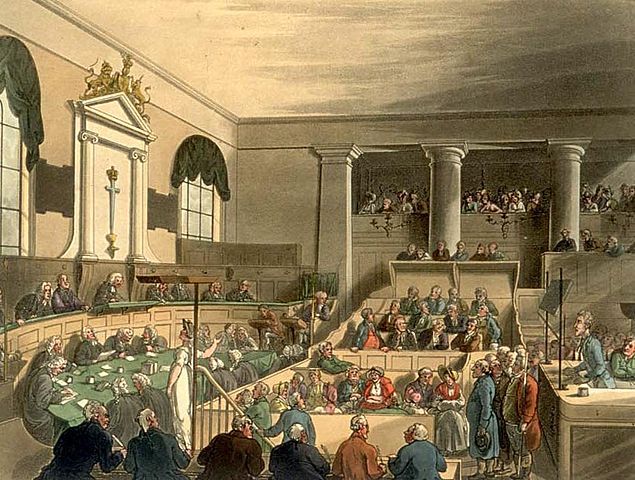
Even though he cannot feel guilt, the court that has placed him on trial works to introduce guilt to K. With the view of K. as an innocent child, there requires a person or people to teach K. the law and morals, a job usually delegated to the parents; however, the novel represses any mentioning of parents. The only mentioning of K.’s family comes from his Uncle Karl, “who was his former guardian...” (Kafka 76), and Karl only tells K. to “think of your relatives...” (Kafka 78) and not his parents. By repressing the matter of K.’s parents, the roles of father and mother are then projected onto the court itself and the female characters surrounding it. Every official of the court and every defendant on trial is male, and due to its overtly masculine presence as well as its role of both judge and punisher, the stereotypical role of father is then attributed to the court. The role is further cemented when K., the son, desires to take the court usher’s wife for himself in order to “revenge himself upon the examining magistrate and his retinue...” (Kafka 57). This shows K.’s Oedipus complex, as he battles the father (in this case the court) in order to have the mother (the women who “belong to the court” (Kafka 121)) for himself. The role of mother then delegates itself to the few female characters who K. finds comfort in, like nurse Leni. Upon first sight of each other at the lawyer Huld’s home, Leni and K. quickly become affectionate and spend the night with each other, but when K. later returns to dismiss Huld, Leni “still clenching her fists... ran after K.” and then “grabbed him by the arm and tried to pull him back” (Kafka 145). At first, Leni was the kind and affectionate mother figure who K. found comfort in after warring with the father/court; however, when K. attempts to abandon both parents, Leni tries to force him back. While the court deals out judgement and punishment, the female characters like Leni give K. comfort as well as a reason to return to both parents, whether by their loving nature or by force. The masculine court and the female characters create a parental dichotomy that entraps K., so that he may be taught guilt through judgement and punishment.
K.’s character has parental figures to teach him morals and guilt, but there are other key figures in a child’s life that further cement their morals, such as religious officials. Nearing the end of the novel, K. finds himself inside a cathedral where he meets the priest who discusses the matter of K.’s trial by telling K. a parable about a man from the country who tries to get past the doorkeeper to the Law. Through this parable, the priest teaches K. that those who belong to the Law are “beyond human judgement” and that “you don’t have to consider everything true, you just have to consider it necessary” (Kafka 173). According to the priest, those who belong to the Law, the court officials, are beyond judgement and are deserving of great respect. Even if the officials’ words are not true, they must be considered necessary in that everything the officials say and/or do is all in order to carry out the Law, and if the Law requires them to lie then they will do so. By having a priest deliver this authoritarian message, the concepts of religious morals and human law are intertwined, making the respect of authority not only legally right but also morally, and given to K. who lacks the knowledge of both. The novel ends right after K. is given the lessons by the priest, and K. is killed by two officers belonging to the court. Before K. dies, he states for the first time in the novel a sense of morality, saying, “I’ve always wanted to seize the world with twenty hands, and what’s more with a motive that was hardly laudable. That was wrong” (Kafka 176). K. had a childish dream of gaining the entire world for himself, but after being taught the ways of the court and authority, he forgoes his dreams as well as his own life acknowledging the selfishness and implausibility of said dream. The priest concretes K.’s lessons in morality and the law, leading to K.’s death, also signifying the death of K.’s innocence.
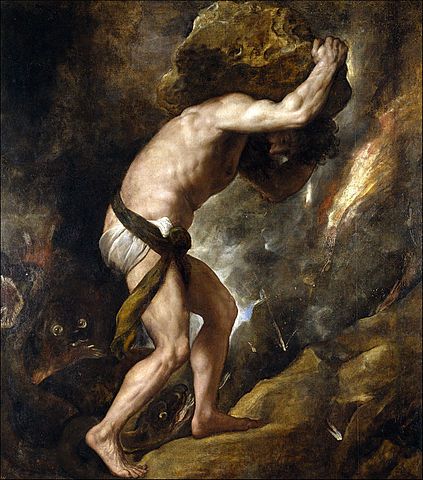
The two novels Death in Venice and The Trial present a paradox in which tragedy is dead, but at the same time the tragedy of the death of innocence exists. Aschenbach’s happy and controlled ending kills tragedy, yet K.’s own story of innocence and guilt is a tragedy. There is one way out of this paradox: Albert Camus’ Absurd Man. In his The Myth of Sisyphus (1942) essay, Camus used the myth of Sisyphus, a man doomed to rolling a boulder up a hill only for it to tumble back down, to describe the life and fate of the absurd man, as he too is subjected to repeating meaningless tasks. However, as Camus stated, “One must imagine Sisyphus happy,” (24) in order to have a truly absurdist life because “there is no fate that cannot be surmounted by scorn” (23). Unlike the existentialists who conclude suicide (or “philosophical suicide” by returning to God or by elevating reason), Camus instead accepted the state of the absurd and became a “happy Sisyphus,” someone who is fully aware of their situation but decides to keep pushing for their own sake. Scorn for one’s place in life is what leads to the feeling of emptiness, and by instead accepting the complete lack of meaning in one’s life, it becomes freeing in that one can fully indulge in their pleasures and relationships. Despite the lack of meaning, Camus believed that by accepting the absurdity of it all, one can still achieve a fulfilling life.
Mann’s Death in Venice and Kafka’s The Trial created an absurd paradox where tragedy had died, yet the great tragedy of the death of innocence still remained. The early twentieth century dawned a new era of rationalization and logic, prioritizing Apollonian drives over Dionysian, an era Nietzsche accredits to the death of tragedy; however, one of the largest tragedies in European history, WWI, occurred with many more tragedies to come. Early modernist literature such as Mann and Kafka then presented both tragedy and rationalization, and both of which resulted in the death of tragedy and the tragedy of the death of innocence. Everyone is guilty of something, so there is nothing to save one from being guilty, and there is no relief from that guilt. In the middle of WWII, Camus published his theory of the Absurd Man, someone who accepts the absurdity of such a paradox and continues to live despite it. Camus offers a way out of the paradox through acceptance, as well as through trying one’s best to be good to their fellow persons. The Absurd Man indulges in what makes life pleasurable for them and their relationships with others, making positive actions and feelings a priority for themselves to achieve, which frees them from the previous paradox of trying to avoid guilt only to suffer guilt. Camus’ Absurd Man becomes the modern hero as it is able to conquer the paradoxical nature of Death in Venice, The Trial, and the era they were written in, while also providing a new ideology to replace what had died.
This literary past gives hope for the current future, as we pass one full year of being in a pandemic, and as a variety of social upheavals take place across the world. The early twentieth century faced two world wars, the Holocaust, severe economic depressions, and disease. Theodor W. Adorno encapsulated the harsh emotions felt at the time, specifically regarding the future of German culture, with his statement, “To write a poem after Auschwitz is barbaric.” How could the Germans and the rest of the world move forward and develop after such grave human tragedies; how can we today move forward and develop after our own tragedies and failings? No matter the answer, there is no going back. Any attempt at returning to “normal” is simply barbaric. However, as seen here, humanity has suffered greatly before and has nevertheless adapted and continued on, bringing us to today. There may still be a great usage for the Absurd Man, as we accept our tragedies and push onwards despite losing purpose. Yet, the Absurd Man was created for a past long gone, a similar situation to our present but still not the same. Whether the Absurd Man has its place in our culture today, we have our history to build upon and create new, useful ideas and philosophy to better represent our current situation. We are not starting from scratch.
Works Cited
Burnham, Douglas, and Martin Jesinghausen. Nietzsche’s ‘the Birth of Tragedy’: A Reader’s Guide. Bloomsbury Publishing, 2010.
Camus, Albert. The Myth of Sisyphus and Other Essays. Translated by Justin O’Brien, New York: Vintage Books, 1991.
Dowden, Stephen D. Sympathy for the Abyss: A Study in the Novel of German Modernism: Kafka, Broch, Musil, and Thomas Mann. De Gruyter Inc., 1986.
Lukacs, Georg. The Theory of the Novel. Translated by Anna Bostock, The Merlin Press, 1971.
Kafka, Franz. The Trial. Translated by Breon Mitchell, Schocken Books Inc., 1998.
Mann, Thomas. Death in Venice. Translated by H.T. Lowe-Porter, New York: Vintage, 1963.
Robertson, Ritchie. Kafka: A Very Short Introduction. Oxford University Press, 2004.

Abbie Steuhm is a short story horror writer with a passion for film and directing. They currently pursue a career in the field of Library and Information Sciences and like to experiment in filmmaking and animation in their free time. Having thrived in Brooklyn, NY, they now reside in the midwest where they continue to create monsters and convoluted science-fiction plots, as well as take care of their darling plants.
